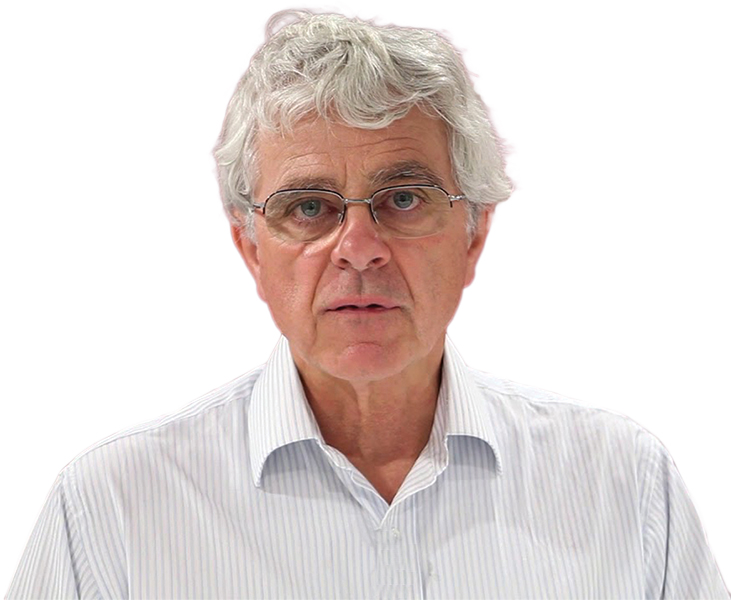
Former barrister HUGH SELBY writes concerned about how poorly the criminal justice system has dealt with allegations made against former NRL star Jarryd Hayne and points to well-intentioned decisions that are exacerbating the problem.
Former NRL star Jarryd Hayne, having served a year in prison, is now out on bail following a 2:1 decision (requiring some 500 paragraphs) in his favour by the NSW court of criminal appeal.

Mr Hayne was convicted of “raping” a woman (whose name is suppressed) with his fingers and mouth at her home on the night of the 2018 NRL Grand Final.
The point of this article is to show first, how poorly our criminal justice system deals with the allegations made against him. Second, to point to well-intentioned decisions that are exacerbating the problem.
Under our current approaches there can be incompatible points of view about the following:
- Whether “consent” or “indifference as to consent” (reckless) can be implied from the conduct of the parties at the time of the sexual contact. A hung jury, as there was at Mr Hayne’s first trial, is a good example of firmly held differences of opinion about what facts have been established and what are the consequences.
To take an example from this case: Mr Hayne was at the complainant’s home for under one hour. He kept a taxi waiting (he was on his way from Newcastle to his home in Sydney). He told the taxi driver to keep waiting. Does the fact that he kept a taxi waiting show, for example, that he was a **** (as some mainstream reporting implied), or does it show that he went there with no prior decision about any sexual activity and that the complainant’s behaviour led to that activity?
- The extent to which the post-incident conduct of the parties is useful evidence. For example, what friends/family are told or not told, deletion of selected text messages by either/both complainant and accused, whether and when a complainant seeks medical attention, what an accused says in post event “ambush” phone calls with the complainant that are lawfully recorded by investigating police.
The everyday reality is that “we” pay a lot of attention to that conduct. Let us not too quickly forget how central it was to chats about Brittany Higgins, and how irrelevant it proved to be when Justice Lee did what others had not: look carefully at the evidence of drinking on the night.
But if such conduct is “relevant” to determining guilt or innocence, why is important “pre-incident” conduct excluded? Readers may recall that once upon a time the pre-incident sexual history/interests of a complainant could be used as evidence.
For the most part such evidence is now prohibited because of the distress it causes to complainants. That’s understandable until one has a case in which her explicit, and repeated social media postings about her interest in having sex with a person of a specific, but different racial group to hers are not disclosed to the jury. The accused belonged to that different group and she “picked him up”. They convicted when the only issue was consent.
- The effect of the approach to the first two issues upon the requirements for a “fair trial”.
Problems we have made for ourselves
Mainstream media nowadays endlessly repeats claims that there are “rape myths”, that we all need to be re-educated about how rape trauma leads to “victims” not behaving as we would expect, that the manner of sexual assault trials needs to change to make these trials fairer for the complainants.
Most of us accept that seatbelts in cars save lives, that asbestos and nicotine cause life-ending illness, that drinking alcohol causes normal inhibitions to be lost, that the sex drive of men and women is essential to our species’ survival, but varies from person to person.
But even with that variability, and leaving aside “forcible sex with a stranger” (the classic crime of rape), much sexual activity between adults follows a path of a number of signals from both of them, and there is a point in the sexual journey when a request by one party to stop entails “that’s impossible” by the other. Does our legal definition of “consent” recognise that a late change of intent about “sexual activity” is not the same as a late change of mind about a food order at a restaurant?
Much is made of various reasons why a complainant may delay going to police. Most of it is not useful to answer the question: was there consent or not in a particular case? Justice Lee’s careful tracking of how much was drunk with what consequences for “consent” in the Lehrmann-Higgins matter was a welcome solution to the several years of comments about could the complainant, in light of her post-event conduct, be believed as to what she imperfectly recalled happened at Parliament House?
We don’t need to be barraged with slogans to understand why most victims of a sexual assault will not go to police, let alone pursue the journey to a trial. Who in their right mind wants to revisit with strangers a public telling of a private sexual interaction? For a true victim having to do so is awful. For the complainant who is “making some or all of it up” there is the worry about remembering the same detail and omissions with each retelling.
And let’s not forget the imprecision and so the unreliability in memory that follows drinking or taking other substances – whether it be intentional or following “spiking”.
A telling omission in the public space is the lack of any attention to the trauma an accused faces when they give evidence at their trial. Unlike the complainant who can have a support person, and screens in the courtroom, or give evidence from another room, the accused gets no support. What’s more, if there are one or more retrials the accused, unlike the complainant, has to take part in each trial.
Talking candidly to strangers – be they police, lawyers, jurors, media – about an intimate sexual experience is not something for which most people can ever be prepared.
Here’s some examples of related problems. I was criticised by a female judge in a judge-alone trial during covid for using the word “vagina”. More recently, running an advocacy training course for advocates who specialise in sexual assault cases, there was obvious unease among more than half the attendees when I used the standard medical names and some well-known colloquialisms for parts of our genitals.
What was wanted were imprecise words that did not offend, or offended less. That the terms I used are freely used on social media, by our comedians, and in televised dramas does not alter the embarrassment felt by many people at hearing them, let alone uttering them. The problem with this “cop out” is that if the fact finder (be it a jury or judge) has to decide what happened and/or if there was consent, then imprecision in “what specifically happened, with what bits of anatomy, done by whom, in what sequence” does not lay a safe basis for that assessment.
Reversing the proper way to assess believability
Criminal trials are about evidence: what evidence is accepted and what is not. That evaluation is always about both the message and the messenger.
The message, the claims about the facts, must meet long-established tests as to being relevant to the case and admissible (that is, it does not fall foul of tests designed to stop bad evidence being used).
The messenger’s believability is also important. An accurate account given by a person with poor believability has less strength than the same account given by a person with strong believability. A messenger’s believability is called their credibility.
Believability of a messenger is a task that we do all the time. We do it with family members, with work colleagues, with people we employ, and with politicians.
The law recognises that the testing of a witness’s credibility has to be managed by the judge. If that independent management was not in place then attacks on a witness’s credibility could be quite unfair, make a fair trial impossible, and lead to a mistrial.
Our recognition of the desire to attack credibility, and how easily such attacks, if unrestrained, can lead to a failure to focus on the facts, makes it surprising that we have allowed so much “interference” with the fact finder’s task to assess believability.
What has happened, and is happening, in our approach to allegations of sexual assault is the demand that we give all complainants a starting advantage over the accused as to believability simply because they are complainants.
Poor decisions are inevitable with this approach. The first task is to look at the facts. Then assess believability. Reversing that order brings terrible results. For example, non adults’ complaints of sexual abuse by clergy were long dismissed because of the assumed credibility of clergy and the assumed non-credibility of the complaining non-adults. Assumptions about credibility displaced a look at the facts.
The judges
The evaluation of what a witness tells us (message plus messenger) is not a value-free task. It is always done through a filter or filters, otherwise known as our beliefs, guiding principles and prejudices.
One of the great benefits of a jury system over judge-alone trials is that juror discussions may cause one or more decision makers to recognise an unconscious bias and put it to one side.
Judges are just as prone to such biases as the rest of us. Unfortunately, there are simple techniques, such as learning to keep a straight face and not engaging in discussion with the lawyers that conceal those biases.
It’s not difficult to then write a decision that reads well and appears comprehensive when the biases have led to the deliberate omission or understating of evidence, of submissions or both.
For those who give the quick retort, “That can be fixed on appeal”, the answer is that lack of money is a common reason for not appealing. If Mr Hayne has funded his three trials and two appeals then he is one of the lucky few able to do that.
Successful barristers gain insights about the habits and quirks of those judges before whom they appear. It doesn’t appear on their tax invoices but it is valuable. Media comment on litigation in this country avoids comment on judicial conduct. Not so in the US.
The background of the three judges who heard Mr Hayne’s appeal is as follows:
Justice Stephen Rothman has had nearly 20 years on the NSW Supreme Court after a career in industrial law. While on the court he has been a trial judge for serious criminal matters and sat on the court of criminal appeal. He rejected the argument that Mr Hayne should be acquitted, but agreed that there should be a new trial.
Justice Deborah Sweeney has been a prosecutor, the head of investigations at the NSW Crime Commission, a trainer and mentor for new prosecutors, a decade as a magistrate, more than 15 years as a District Court judge, and since 2023 a Supreme Court judge. She found there were matters “significantly adverse to the honesty and reliability of the complainant’s evidence” (paragraph 478). Consequently, she would have acquitted Mr Hayne. However, her opinion was not shared by her colleagues.
Justice Anthony Meagher (the dissenter who would have upheld the jury guilty verdict) has had more than a decade on the NSW Court of Appeal following a successful career in commercial litigation.
Background facts
Mr Hayne’s experience of criminal justice has been protracted. At his first trial in 2020 the jury could not agree on a verdict. His second in 2021 found him guilty; however, he successfully appealed that conviction. His third trial was in 2023. For the second time he was found guilty. It is that jury verdict that has now been overturned.
For the purposes of this article the following factual background is necessary:
- Mr Hayne was at the complainant’s home for 46 minutes;
- He and the complainant had not met before this incident;
- It was agreed that his mouth and his finger/s contacted her genitalia;
- The complainant had expressed a sexual interest in Mr Hayne to him during social media exchanges in the two weeks prior to their meeting. In one message she said, “…I imagined what it would be like to be fucking you when you started talking”. (For a lot more detail of pre-meeting messages see Justice Sweeney’s decision at paragraphs starting at 254, see also 331 and following. I’ll let you the reader characterise those messages and what inferences are open);
- The complainant alleged, and Mr Hayne denied, that she told him ‘No’ and ‘Stop’. Mr Hayne says that all sexual activity was consensual. He gave evidence of her contact with his genitals.
- Mr Hayne kept the taxi waiting, but left the bedroom to go outside to talk to the taxi driver who went back to waiting;
- Mr Hayne was in and out of the complainant’s bedroom, not just to talk to the taxi driver, but also to watch the end of the NRL Grand Final with the complainant’s mother.
- It does not seem that the complainant ever objected to his being in her bedroom;
- The complainant’s mother came to the bedroom because the taxi driver was at the front door. The complainant never called out to her.
- On social media with a female friend soon after Mr Hayne left in the taxi the complainant was explicit about the oral sex but made no mention of force or her lack of consent. (See also paragraph 395 on how both were involved in undoing clothing and its removal.)
Why being able to test all the evidence is essential
Where there is more than one trial then the audiovisual of the complainant’s evidence at the first trial is played to the fact finder at that second or later retrial. The complainant does not give evidence again.
However, if new evidence comes to light then an application can be made to the trial judge to have the complainant come to the later trial to be questioned about that new evidence. For the third trial Mr Hayne made such an application.
One of Mr Hayne’s grounds of appeal was the trial judge’s decision at the third trial to refuse his application that the complainant come to court to be cross-examined on her communications with:
(a) a third person on the day of the alleged offence and that same person on the day of hearing of Mr Hayne’s successful appeal after his second trial found him guilty; and,
(b) her interactions with a fourth person and the police on that same hearing day (paragraph 77).
These were communications about which the defence team had been unaware at the first two trials.
Mr Hayne’s lawyers wanted to use this fresh questioning to show the jury that the complainant hadn’t revealed the exchanges between her and the third and fourth persons because in those exchanges she did not allege “non consent”.
The underlying concept is that if a person is prepared to tell a third person about oral sex then one might expect them to be quite frank about it being non consensual.
Justice Meagher (who provides a detailed account of the evidence and the various arguments both at trial and at the appeal) found: “There was no unfairness to (Mr Hayne) in the trial judge not granting leave for the complainant to give evidence responding to the broad proposition that she had concealed evidence of these interactions with (the third person) from the police because she believed they did not support her version of events. It was not necessary for that proposition to be put before the concealment argument could be made (by the defence in its closing submission), raising a question as to the credibility and reliability of the complainant’s evidence … (paragraph 106).
With all the appropriate respect due to the judge this assessment rather misses the fundamental point that the jurors should decide issues of believability of any witness based upon what they hear and see from the witness giving evidence in front of them. A closing submission about believability or the lack of it needs to be grounded in the evidence that has been admitted at the trial. This point was appreciated by Justice Sweeney (paragraph 484).
No one – not the advocates or judges or observers – should guess at what answers a witness will give at a hearing. What witnesses say is often a surprise to them as it is to the questioner. Also, it’s not just what a witness says, it is how they say it by way of tone, loudness, speed and pauses. None of those aspects are revealed in typed transcript. They are, however, indicators of believability and therefore are significant to fact finders who are trying to decide what evidence to accept or reject.
As Justice Rothman observed: “…the credibility of the complainant was the most important issue in the trial” (paragraph 239). Justice Sweeney thought the same. (paragraph 482)
Justice Rothman also said: “… in this case, demeanour would have played a significant role in the determination of that which had been proved beyond reasonable doubt. It is, in those circumstances, essential, where it is possible and not inconsistent with the purposes of the legislation, for the jury to assess the complainant’s evidence in answer to those questions” (paragraph 241).
What happens next?
Mr Hayne must now wait for the NSW DPP to decide whether it will take the matter to yet another trial. That would be his fourth.
However, as Justice Rothman observed, another trial would be unlikely to be heard until after Mr Hayne was eligible for parole (early May 2025) on the sentence he was given in 2023. This is because the waiting times for trials in the NSW District Court are now so long.
That long wait may be one reason among others that Mr Hayne was given bail. Had that been refused then any retrial would start after his release on parole. That would make this successful appeal pointless.
Justice Sweeney was more direct: “I am of the view that in the circumstances of the history of this matter, to put the applicant on trial for a fourth time would not be in the interests of justice”.
But neither of those observations binds the DPP and fourth trials, while rare, are not unknown. Whether they can be justified is a matter about which reasonable people can reasonably differ, especially if they put to one side the unequal resources of the DPP and the accused, the stress upon the accused, acknowledgement that things went wrong at earlier trials that should not have gone wrong, and any appreciation that at some point claimed pursuit of justice begins to attract, rightly or wrongly, a strong stink of “let’s get him, whatever it takes”.
Former barrister Hugh Selby’s free podcasts on “Witness Essentials” and “Advocacy in court: preparation and performance” can be heard on the best known podcast sites.
Who can be trusted?
In a world of spin and confusion, there’s never been a more important time to support independent journalism in Canberra.
If you trust our work online and want to enforce the power of independent voices, I invite you to make a small contribution.
Every dollar of support is invested back into our journalism to help keep citynews.com.au strong and free.
Thank you,
Ian Meikle, editor





Leave a Reply